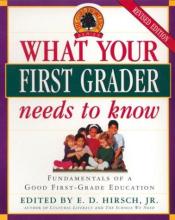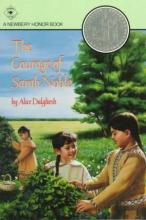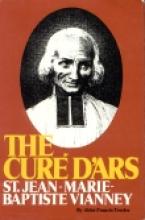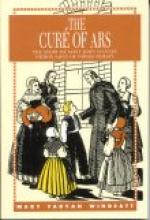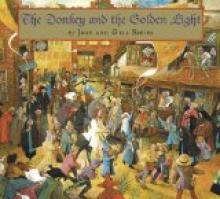No name
The Core Knowledge Series
Titles in this series include What Your Kindergartner Should Know, What Your First Grader Should Know, etc. The series is written for parents of children in traditional schools to get an idea of how the schools are doing and to assist the parents in supplementing their child's education at home. The series amounts to an extensive "Scope and Sequence" which outlines the fundamental skills and concepts which should be understood in each grade and includes supplementary exercises, poems, stories and recommended resources to assist in fulfilling the stated goals. I know quite a few Catholic homeschoolers (particularly those who are "putting together their own program") who have found this series very helpful. It can also be a good choice for those who are temporarily homeschooling under circumstances that don't allow for a large quantity of books (such as those homeschooling away from home for various reasons). For others, it might be "one more thing" to make their lives more complicated. Please keep in mind that, although the perspective is in many ways positive (especially in comparison to the public school system) the series is still secular and contains some material which should be taken with a grain of salt.
The Courage of Sarah Noble
The Courage of Sarah Noble is based on the true story of eight year old Sarah Noble, who accompanies her father into the Connecticut wilderness to cook meals for him as he builds the family's cabin. The story takes place in 1707 and focuses on her courage against the unknown fears of the wilderness.
Because the book focuses so much on her courage, this book could be used as a springboard for discussing the role of Guardian Angels in our lives. Of course, it should be mentioned to the child reading the story that Sarah was not Catholic and would not know that she could pray to her Guardian Angel whenever she was frightened. In the same light, it would also have been nice if Sarah would have placed more faith in God and said a prayer every time she was frightened instead of clutching her cloak or repeating the words "'keep up your courage.'" Sarah does, however, say her night prayers when she stays with an Indian family while her father returns home to bring the rest of the family to the cabin and she does read her Bible. (Both incidents are naturally interwoven in the story.)
In particular, I really liked the way Dalgliesh develops Sarah's relationship with her father. It is very heart warming to see this kind of relationship presented in literature. Not only is he a good role model as a father, but, as a character, he speaks with wisdom. He is very gentle, patient, and loving with her. One statement that he makes that is very heartening to hear is when he says, "'It was a blessing the Lord gave me daughters, as well as sons.'" How many daughters in real life yearn to hear their fathers say this? He also comments, when he is referring to the Indians, "'In our home all will be treated with kindness always Sarah.'" This is a nice counterpoint to the fear she had of the Indians as ruthless savages. The story also realistically makes clear that although some Indians are peaceful, some are to be feared.
My only concern with the story would be that I would be hesitant to read this story aloud with younger children (4 year olds) in the room who are already fearful by nature, because of the constant emphasis of her fear. For the age that it is intended, it should not be a problem.
Overall, this is an easy to read short chapter book for the 3rd-6th grade reader. It is a very realistic portrayal of life in the wilderness as a little girl struggles to overcome her fears, at the same time trying to do the right thing. Because of the way each chapter is presented, this book would be ideal for discussing each chapter's theme between the parent and child. I would recommend this book along with discussion. For example, "Do you think it was kind for the children to tease Sarah?" What could they have said instead.
The Cure D'Ars
This book also bears a special recommendation from Pope John Paul II and had a substantial influence on his life. He had this to say about St. John Vianney and this particular book in his own book Gift and Mystery: On the Fiftieth Anniversary of My Priestly Ordination...
"With great emotion I visited the little old church where Saint John Vianney heard confessions, taught catechism, and gave his homilies. It was an unforgettable experience for me. From my seminary years I had been impressed by the figure of the Cure d'Ars, especially after reading his biography by Monsignor Trochu. Saint John Marie Vianney astonishes us because in him we can see the power of grace working through human limitations. It was his heroic service in the confessional which particularly struck me. That humble priest, who would hear confessions more than ten hours a day, eating little and sleeping only a few hours, was able, at a difficult moment in history, to inspire a kind of spiritual revolution in France..." (pp. 57, Gift and Mystery by Pope John Paul II)
The Cure of Ars
The Dawkins Delusion?
This would be an ideal resource for the student heading off to a secular college, who may encounter those who will attack his Christian beliefs based on atheistic notions.
The Day the Sun Danced
Published by CCC Animated Video
This is a nicely done version of the story of Our Lady's appearances to the three small children in Fatima, Portugal in 1917. It is a simpler version than The Miracle of Our Lady of Fatima and more appropriate for very young children.
Updated March 2024: This video has been reissued on DVD with three languages, English, Spanish, and French, on the same disk.
The Donkey and the Golden Light
As he made his way into the city, Bethlehem thought of the donkeys seeking comfort in one another, the woodcutters struggling to make a living, the village children looking for fun, the farmer helping him find strength, the peasants hoping for a bountiful future, the merchants pursuing riches, the vagabonds entertaining the villagers, the students seeking knowledge, and his family searching for safety...The repetition can get bit tedious, not only for me but even for my almost 3 year old; mostly because there are so many items in the list by the end. At the same time, it works quite well as a subtle reminder of the universality of salvation. Bethlehem later reenters the Gospel narrative when he carries Christ into Jerusalem, thinking as he does so that there is something familiar and special about this man. He stands outside in the street during the Last Supper, unaware of the momentous event happening above him. The crucifixion is not really dealt with directly in the story. The donkey is only aware of an earthquake and a great disturbance as angels challenge the forces of evil in a painting inspired by Brugel's "The Fall of the Rebel Angels". A small circle with three crosses hangs in the background almost lost in the tumult and confusion. I think it rather works, though. I like the oblique approach that allows the adult reader to mediate for the child the details of Christ's passion and death since the crucifixion itself can be rather strong material for very young children. The book ends as Bethlehem meets the resurrected Jesus in the garden and recognizes him and finally enters into his rest and peace:
The donkey's sadness, pain, and weariness left him. With joy, Bethlehem went to Him and His promise of peace, goodwill, and a new beginning for all.I really appreciated the fine art aspects of the book. The detail-rich paintings are fascinating to our toddler, who loves to point at and ask questions about various figures in the scenes. Though I'm not sure she understands the more hidden meanings just now, as she grows she will be able to appreciate other layers. Older children will be able to understand more about the Biblical themes, to hunt for the scenes from the life of Jesus, and to connect their reading of this book with a study of Brugel's paintings. Although this book is aimed at 4-8 year-olds, it will appeal to all ages simply because of the beauty of the art and the simplicity of the story.
The Door in the Wall
Robin is taught how to read and write, woodcarving, and how to swim at the monastery, but is very disappointed that he cannot become a knight. Who would want a knight who is unable to ride a horse and can only walk with the help of crutches? Robin is finally taken to Sir Peter's castle at Lindsay, where he was to have served as a page and then a knight. He is taken into Sir Peter's service. The castle is soon besieged by the Welsh, and the food and water is slowly diminishing. Robin has an idea of how to save the castle, but can he get out of the castle and obtain the assistance of Sir Fitzhugh in time? Will Sir Fitzhugh help him?
The Door in the Wall gives you a good idea of what life in the Middle Ages was like for a young boy. It has beautiful black and white drawings that show you some of the Medieval styles of clothing. I think that this book would be good for children in grades 4 to 7. My only complaint was that I found the plot slow-moving. I would recommend this as an addition to your study of the Middle Ages.
The Dot and the Line
"Freedom is not a license for chaos" is my son's signature below his email messages. It was written by Norton Juster, of The Phantom Toolbooth fame, and it comes from our almost-17-year-old's favorite book.
The phrase is the turning point and premise of this amazing, simply delightful little Math book. Math? That is our son's most disliked subject. Wait, The Dot and the Line is not a Math book! It is a hilarious comedy! But is that all? It is a romance, a story of love deeply felt, pursued, capable of provoking great things in the soul. In a little math book? Is it possible? Yes, it is.
Our classic languages-loving son reads it aloud every time this book visits us from the library. He suffers with the straight, dull and unbending line when driven to the "edge" (of the paper— the line is drawn on the edge of the page) as the "perfect by every measure" dot flirts around with the anarchist, slothful squiggle. Moved by great love, the line at first attempts to show its own grandeur by asserting its importance in art, world politics, sports. To no avail: the dot is not impressed. Then the unimaginable happens: when almost giving up, the line, using great concentration, becomes able to make angles!
What follows next is what makes this little book a great book: the enthusiastic line makes more and more angles in a chaotic frenzy, until... it realizes that chaos without order leads nowhere. It stops, straightens itself again and it discovers that freedom is not a license for chaos. From then on, life changes for the line: exercising great control and virtue, it discovers a new world:
For months he practiced in secret. Soon he was making squares and triangles, hexagons, parallelograms, rhomboids, polyhedrons, trapezoids, parallelepiped, decagons, tetragrams and an infinite number of other shapes so complex that he had to letter his sides and angles to keep his place. Before long he had learned to carefully control ellipses, circles and complex curves...
Ah, the virtue of Mathematics! The beauty of its exact angles and dimensions. The rhythm, art and music of what it is able to create, using exercise and order! I will refrain from spoiling it completely for the new reader, but let me repeat the "moral" of the story: to the vector, the spoils.
The back jacket, after telling us that the author, among other things, runs "a support group for negative numbers" (one can glimpse Mr. Juster's opinion of the state of the culture in the 60s) mentions an award winning film, and I found it on You Tube. I was happy to see that that the screenplay was also written by the author but I warn you that the book is much better. This new 2001 edition has wonderful graphics and some different pictures as well.
Original copyright 1963.

